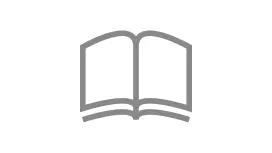How stationary fuel cells are revolutionizing the power supply

Climate change presents towering challenges for humankind. Yet demand for electricity is rising worldwide. Bosch has found a way to balance the scales — its climate-friendly stationary solid oxide fuel cells are the key to finally making fossil fuels a thing of the past.
A global appetite for electricity
Electric vehicle registrations are surging. The digital transformation is making inroads on all fronts, from industrial environments to our private spheres. Advances such as the internet of things, big data, and the electrification of buildings and manufacturing with heat pumps and the like require a great deal of power. It will take a sustainable, ecofriendly energy supply to reconcile their consumption with climate action goals. Bosch has a solution — the stationary solid oxide fuel cell.
An electrochemical reaction in the SOFC generates electricity and heat. Ceres Power, a UK company specializing in fuel cells, developed the prototype. Bosch has turned this revolutionary innovation into a universally deployable, high-performance system that can be mass-produced. It can help satisfy the world’s appetite for electricity in a sustainable way. Bosch engineer Havva Ana Göcmen is doing her part to commercialize the SOFC system.

I’m very excited to be advancing the SOFC system from the prototyping phase to the finished mass-produced product.
Ready for a climate-friendly future
The best-case scenario is for the stationary solid oxide fuel cell to be powered by hydrogen. Given enough hydrogen from renewables and pipelines to transport this gas, the SOFC system will be the key to saying farewell to fossil fuels. Carbon emissions will then plummet to zero. This tomorrow technology works today. It can already be fed with natural gas, biogas, or a mixture with hydrogen, so the SOFC system is far more ecofriendly than other sources of electricity. For one thing, it emits no nitrogen oxides or particulates with the exhaust gas. For another, carbon emissions when the system runs on natural gas are nearly 40 percent lower than the CO2 levels emitted by Germany’s electricity mix.

An award-winning concept
The Deutsche Gaswirtschaft, a German gas industry association, awarded this creative concept its prestigious Innovation Award in November 2020. The SOFC system took top honors in the Innovative Products category. As the jury noted, “This technology is ideally suited for developing a decentralized grid.” With a rating of around 60 percent, the SOFC is indeed the front-runner when it comes to electrical efficiency. In fact, its overall efficiency climbs up to 90 percent when the generated heat is put to productive use. A coal-fired power plant achieves just 40 percent and a gas-fired power plant 45 percent. Any number of individual units can be connected to create virtual power plants.
Organized in a larger network, these plants can collectively respond to and meet fluctuating demand for electricity. This is why SOFC systems lend themselves to powering commercial buildings, industry, data centers, clinics and modern urban neighborhoods.
Preparations for the start of production are in full swing
There is much to be done before production kicks off at the Bamberg plant. Bosch draws on a deep well of expertise in multiple fields to commercialize the fuel cell. Its engineers continue to improve its architecture and production processes to scale the cell up for mass manufacturing. Decades of experience manufacturing ceramic components are a tremendous asset. It takes state-of-the-art engineering to coat metal destined for products such as lambda sensors for cars and motorcycles. Bosch engineers are now optimizing this process to make metal-based fuel cells. Havva Ana Göcmen and her team are determined to deliver a lean and efficient production line. Bosch is investing hundreds of millions of euros to mass-manufacture and market SOFC systems at an affordable price.

The future of energy generation, ramped up for mass production

Bosch engineer Havva Ana Göcmen heads up a team tasked to develop a section of the SOFC system at the Bamberg plant. It is busy creating the optimum conditions for mass-manufacturing solid oxide fuel cells, one of which fits in the palm of your hand. She and her team are working to speed up cycle times and automate production and testing processes. This will also help bring down costs. The Bamberg plant is going to manufacture fuel cells on a large scale and connect several hundred of them to create stacks. These high-performance stacks are the heart of the SOFC system. Bosch’s Homburg and Wernau locations will handle the downstream production stages to complete the unit.

Hydrogen is going to impact the plans of most energy suppliers in Germany in the years ahead.
First pilot plant up and running at Bamberg

Bosch worked with other organizations to gain real-world experience with the SOFC system. One was Stadtwerke Bamberg, a municipal utility. The former ticket office of Bamberg’s central bus station has one of these systems installed. Markus Ziegler, the technical head of Stadtwerke Bamberg’s district heating supply unit, was working closely with Bosch on this project. Bamberg’s municipal utility expects these units to be the power plants of the future because stationary fuel cells run quietly with little vibration and can be connected to create a fail-safe system that runs on hydrogen from renewable power sources.
The electricity from the fuel cell was fed into the public grid during the pilot period. It also generated warmth that the bakery inside the bus station used for its heating and hot-water systems. This first pilot project at the ZOB in Bamberg has since been followed by numerous other SOFC pilots in the building and industrial sectors as well as in data centers. They all provide valuable insights for the upcoming series production — for the future of energy supply.
Find out more about the pilot projects of the Bosch SOFC fuel cell system.

